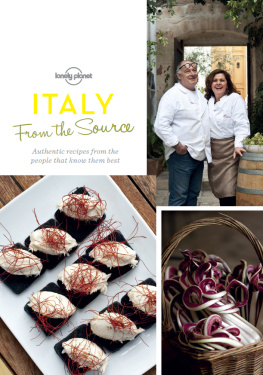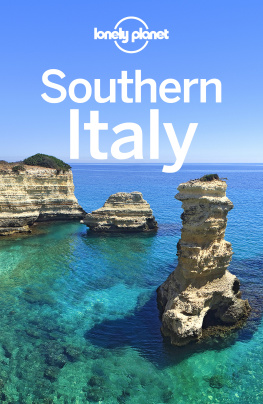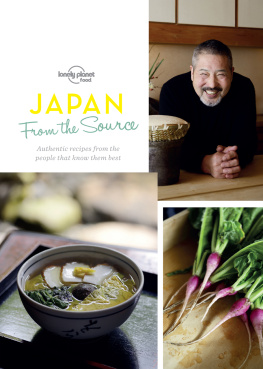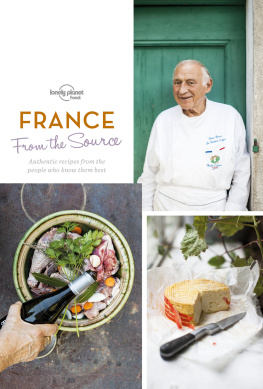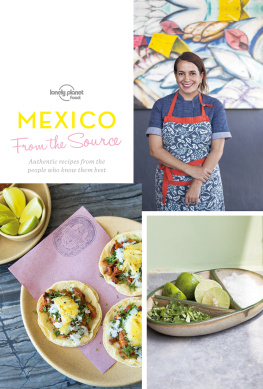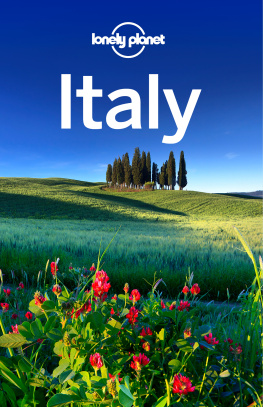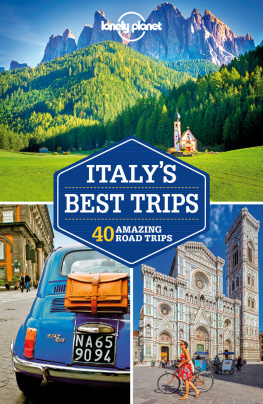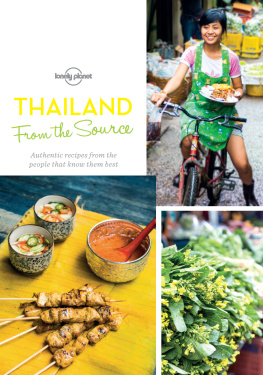

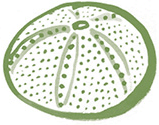
INTRODUCTION
Italian food: much loved, much appropriated. There are more international interpretations of pizza, pane and pasta pomodoro than there are Italians living in Italy, and while this speaks volumes about the worldwide appeal of this deceptively simple cuisine, it rarely says much about authenticity.
Forget Jamies Italian weve gathered 60 recipes from Italys top to toe, coast to coast: 60 dishes harvested from the very places in which they originated. Nigella might do a polished pollo arrosto and the River Caf an iconic zuppa alle vongole but as one of our featured chefs from Genoa says: unlike French cuisine, Italian food came not from a tradition of great chefs but from mothers and grandmothers. And to cook food just like mama used to make it, you have to go to the source, to the very families who originated iconic dishes, or who inherited them and keep them alive. These are the people whose stories we tell, through their recipes, their restaurants and their great love of the fertile terrain that surrounds them.
Unfussy and family-focused, Italian food is nothing if not a celebration of simple ingredients a perfect margarita pizza, spaghetti aglio e olio, a caprese salad dressed with nought but locally grown and pressed extra virgin olive oil. And more often than not, less is more. A handful of modest ingredients can add up to a thing of great beauty, and great provenance, too. Italys produce, from its grains to its grapes, its olives to its truffles, form culinary maps of the country. The home of Slow Food, Italys is the ultimate locavore culture whose seasonal, regional cuisine is focused on recipes that are deeply rooted in the earth and sea from which theyre derived.
So dont expect to find chapters in this book dedicated to antipasti, primi or secondi but rather to regions, each with their own home-grown ingredients that are conjured into simple-genius dishes. From a spaghetti al rag in Bologna, to a classic pizza portofoglio in Naples, a hand rolled orecchiette in Puglia to a Piemontese vitello tonnato, we bring you the recipes that define a region, a city, a medieval commune or hilltop village; recipes that have often been handed down for generations and, thanks to Italys wealth of DOC (Denominazione di Origine Controllata) and IGP (Indicazione Geografica Tipica) produce, can only have come from the very spot from which we harvested them.
Like any great trip through Italy, this book should see you revisit some old haunts and still, we hope, learn something new but also, were sure, uncover some great new food terrain. And there is food for everyone, from simple antipasti, such as bagna caoda and stuffed zucchini flowers that take 15 minutes to whip up but are the making of any party table, to technical challenges from such greats as Massimo Bottura and Norbert Niederkofler, plus a fair few nona bakes too. Buon appetito!

NORTHEAST ITALY
Hot broth-based soups, creamy warming polenta and risotti reign supreme in Italys northeast. Add to this some of the countrys most sculptural vegetables curlicue stems of pretty purple radicchio, globes of artichokes fit for a flower arrangement and ancient roots from Alpine slopes and you have a menu thats both earthy and elegant.
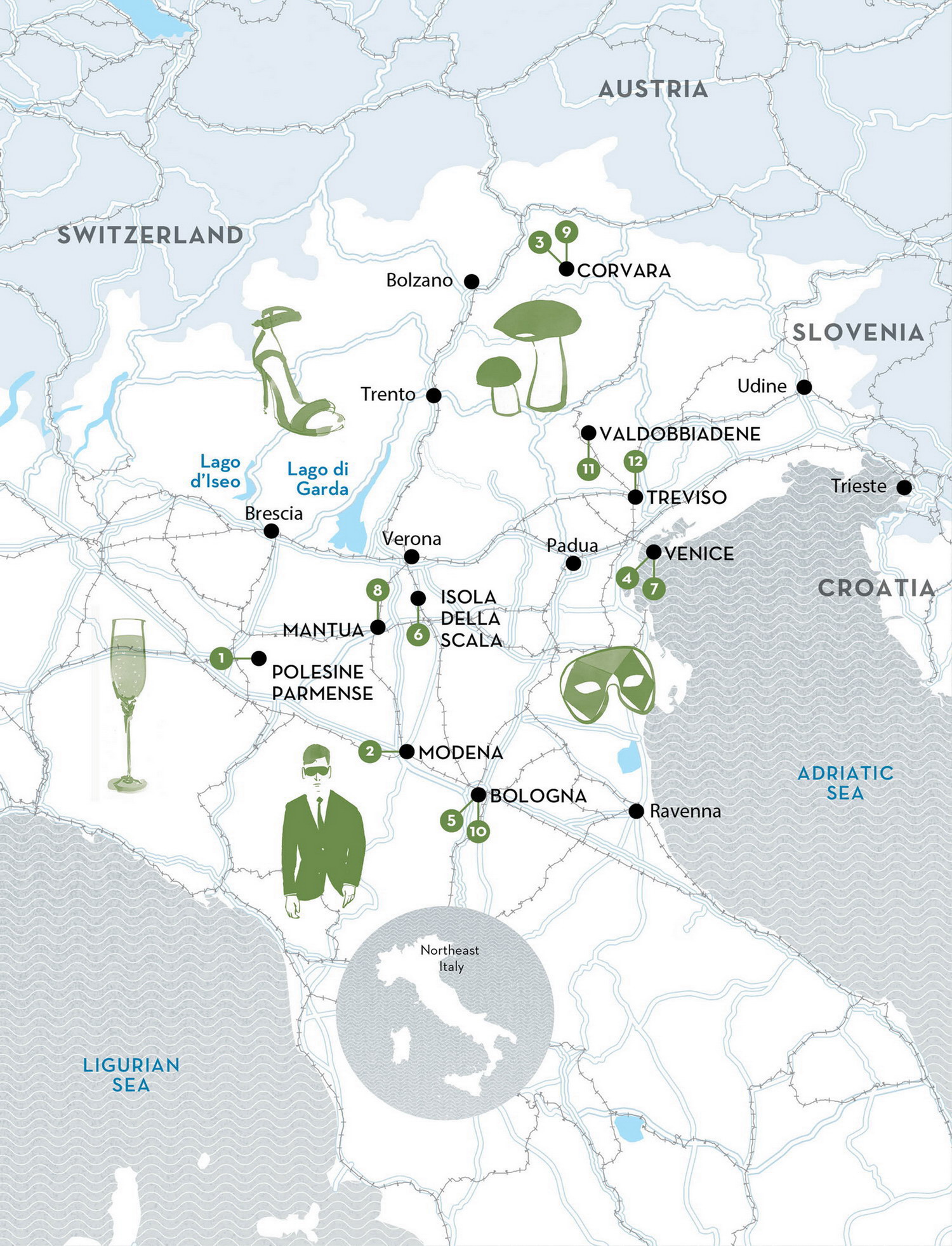

Parmesan bread balls in chicken broth with garden vegetables


Dumplings with Graukse

Creamed cod cicchetti

Tortellini in broth


Tagliolini with Venetian artichokes & scampi

Pumpkin tortelli

Slow cooked suckling pig shank with cumin canederlo dumplings and cabbage salad

Tagliatelle with ragu

Risotto with Treviso radicchio & Prosecco



I SOFFICI AI TRE PARMIGIANI IN BRODO DI GALLINA FIDENTINA CON VEDURA DEL LORTA
Parmesan bread balls in chicken broth with garden vegetables
These soffici are of a feather lightness thats far from their rather stodgy English translation bread balls and are nothing like oft heavy gnocchi or polpette di pane. The signature soffici of chef Massimo Spigaroli of Antica Corte Pallavicina are rich with three types of DOP Parmesan from Emilia- Romagna, served in a delicate chicken broth.
Chef//
Massimo Spigaroli
Location//
Antica Corte Pallavicini, Polesine Parmense
S offici means fluffy in Italian, and these easy-to-make bread balls are just that: fluffy-light, despite the richness of the Parmesan within. This recipe calls for three types of Emilia-Romagnas DOP cheese: Parmigiano Reggiano di Pianura (from the flatlands), Parmigiano Reggiano di Colline (from the hills) and Parmigiano Reggiano di Montagna (from the mountains). More than just a change of name, these three cheeses have tastes that correspond to the altitude at which their respective cows are grazed, the flavour and fat content of the milk changing with the different grasses and herbs the cows eat. But if you cant get these subtly different Parmesans, one well-matured variety will do.
Set in the Emilia-Romagna heartland of Polesine Parmense with views of the River Po, the Antica Corte Pallavicina estate comprises a farm where the pigs for their famed

